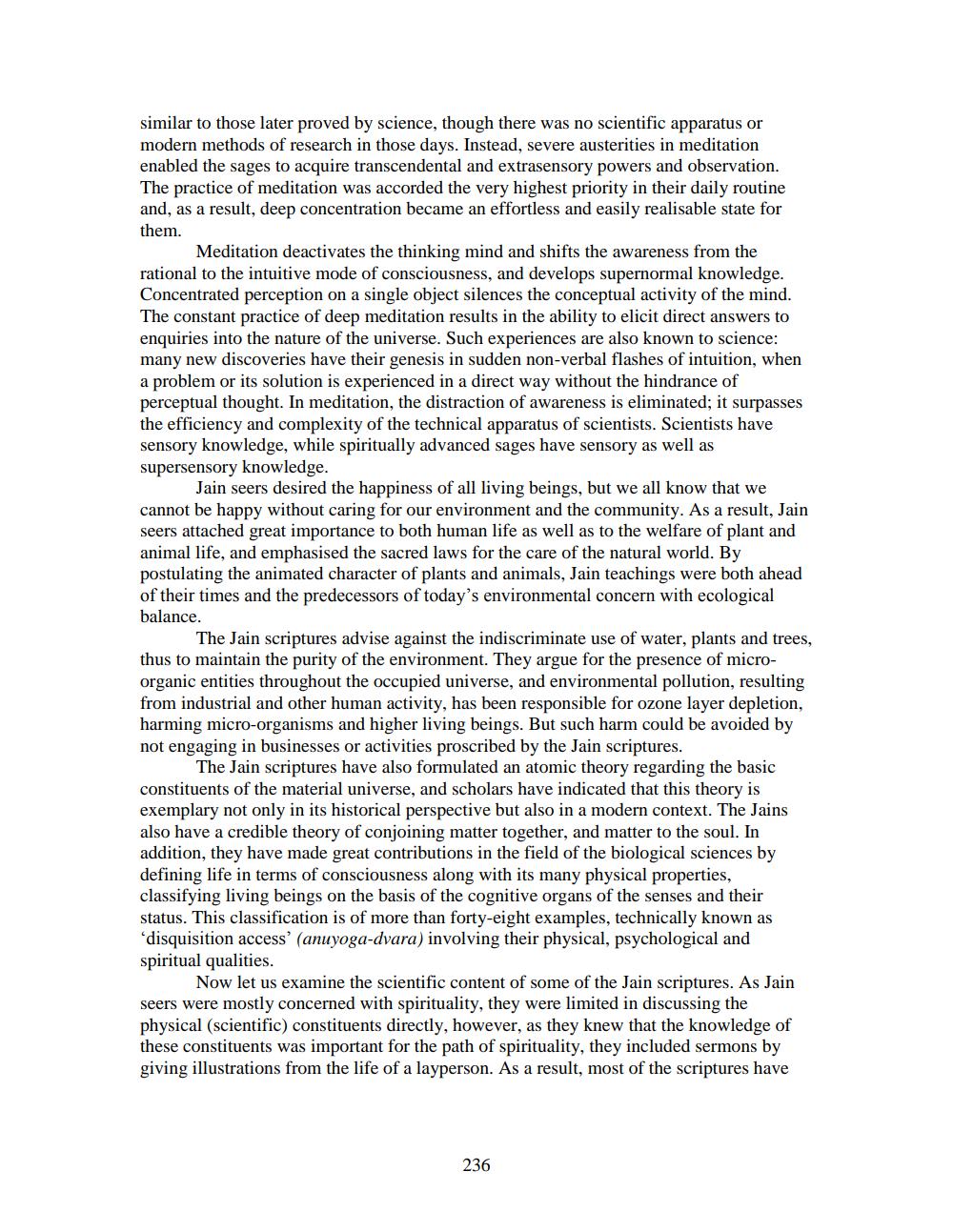________________
similar to those later proved by science, though there was no scientific apparatus or modern methods of research in those days. Instead, severe austerities in meditation enabled the sages to acquire transcendental and extrasensory powers and observation. The practice of meditation was accorded the very highest priority in their daily routine and, as a result, deep concentration became an effortless and easily realisable state for them.
Meditation deactivates the thinking mind and shifts the awareness from the rational to the intuitive mode of consciousness, and develops supernormal knowledge. Concentrated perception on a single object silences the conceptual activity of the mind. The constant practice of deep meditation results in the ability to elicit direct answers to enquiries into the nature of the universe. Such experiences are also known to science: many new discoveries have their genesis in sudden non-verbal flashes of intuition, when a problem or its solution is experienced in a direct way without the hindrance of perceptual thought. In meditation, the distraction of awareness is eliminated; it surpasses the efficiency and complexity of the technical apparatus of scientists. Scientists have sensory knowledge, while spiritually advanced sages have sensory as well as supersensory knowledge.
Jain seers desired the happiness of all living beings, but we all know that we cannot be happy without caring for our environment and the community. As a result, Jain seers attached great importance to both human life as well as to the welfare of plant and animal life, and emphasised the sacred laws for the care of the natural world. By postulating the animated character of plants and animals, Jain teachings were both ahead of their times and the predecessors of today's environmental concern with ecological balance.
The Jain scriptures advise against the indiscriminate use of water, plants and trees, thus to maintain the purity of the environment. They argue for the presence of microorganic entities throughout the occupied universe, and environmental pollution, resulting from industrial and other human activity, has been responsible for ozone layer depletion, harming micro-organisms and higher living beings. But such harm could be avoided by not engaging in businesses or activities proscribed by the Jain scriptures.
The Jain scriptures have also formulated an atomic theory regarding the basic constituents of the material universe, and scholars have indicated that this theory is exemplary not only in its historical perspective but also in a modern context. The Jains also have a credible theory of conjoining matter together, and matter to the soul. In addition, they have made great contributions in the field of the biological sciences by defining life in terms of consciousness along with its many physical properties, classifying living beings on the basis of the cognitive organs of the senses and their status. This classification is of more than forty-eight examples, technically known as 'disquisition access' (anuyoga-dvara) involving their physical, psychological and spiritual qualities.
Now let us examine the scientific content of some of the Jain scriptures. As Jain seers were mostly concerned with spirituality, they were limited in discussing the physical (scientific) constituents directly, however, as they knew that the knowledge of these constituents was important for the path of spirituality, they included sermons by giving illustrations from the life of a layperson. As a result, most of the scriptures have
236




